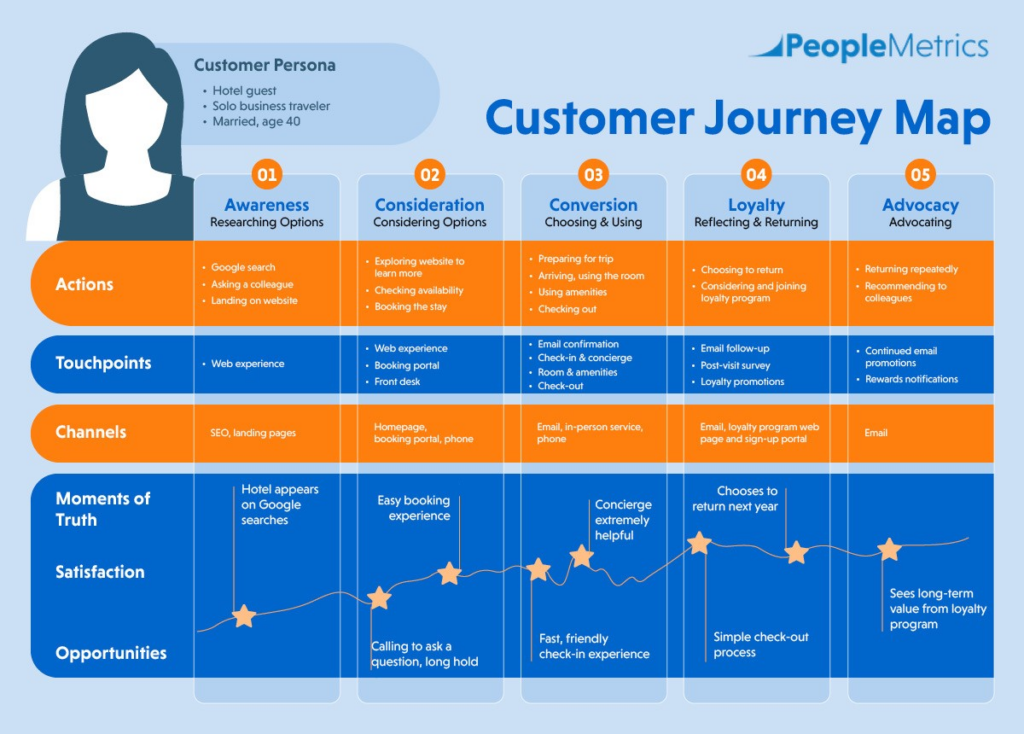Association leaders know feedback from members is vital and have methods in place to collect it. Just like a retail business might send out a customer feedback survey to determine the best ways to serve its audience, associations should also value “customer” feedback from their members.
However, it’s common for all types of organizations to gather feedback but fail to put it into action. This can be especially troubling for associations as their membership model relies on continual customer satisfaction to promote membership renewals, rather than one-time buyers.
Making effective use of customer feedback requires developing a customer experience (CX) program or member experience program. CX programs aim to establish frameworks for gathering targeted feedback, putting that feedback into perspective, and creating systems that enable organizations to act on feedback quickly.
To help your association better implement members’ feedback, this article will explore how a CX program can work for an association and how your association leverage this to create a better experience for your members!
1. Map your customer journey
What data is your association collecting now? And has it been helpful – or is it just sitting in a spreadsheet file? Running a quick check of what your status is now, can set you up for success as you adjust the process!
When first getting started with CX, it may be unclear what aspects of your association to focus on gathering customer feedback on. Should you ask customers about their experience with your website? Your customer service team? The food served at your most recent event?
You can get a better sense of what interactions are important for your members and how they impact a member’s experience by creating a customer journey map. PeopleMetrics’ guide to customer journey maps explains how mapping all of the touchpoints you have with customers allows your organization to identify connections between various interactions and the specific outcomes they lead to. The graphic below uses a customer’s journey at a hotel as an example, but it applies just as well for associations!

The key components of a customer journey map include:
- Customer persona. Divide your members into segments represented by different personas. Each persona should have a unique customer journey map that represents their specific actions, problems, and satisfaction. Gather data and create customer profiles to dive deeper into your individual members’ goals and motivations and look for commonalities that can be used to create personas.
- Stages of the customer journey. The customer journey can be divided into five stages starting with awareness, in which potential members first learn about your organization, to advocacy where they actively participate in your organization and promote it to others.
- Actions. Think carefully about the exact steps your members take at each part of their journey. Focus on physical actions, such as exploring your website or reading new content, rather than abstract ones, such as “learning more” or “considering signing up for a higher-tier plan.”
- Touchpoints. How does a member interact with your association at each stage? This might just be exploring your website or something more hands-on, such as reaching out to a team member for troubleshooting challenges with your membership site.
- Channels. Channels are the specific platform used to interact with members. This will likely consist of email, various pages on your website, and phone calls.
- Moments of truth. During the customer journey, your members will have experiences that, if mishandled, may cause them to abandon their journey entirely! These are known as moments of truth and should be one of your top considerations when determining what to gather feedback on first.
- Satisfaction. Satisfaction measures your members’ feelings during each stage of the customer journey.
- Opportunities. When analyzing your customer journey map, use the opportunities section to note potential places of improvement.
You can create customer journey maps to encompass your members’ entire journey or focus on a specific touchpoint. For example, you might create a customer journey devoted entirely to your members’ initial interactions with your website. Walking through your website with fresh eyes might help identify one of those “moments of truth” (like a 404 redirect error) that would cause a potential member to abandon their research of your association entirely!
2. Identify target moments of truth
Moments of truth are pivotal events in the customer journey that can dictate whether a member continues their relationship with your organization. When setting up a new feedback collection system, your top priority should be identifying these moments and setting up feedback surveys around them.
It might be helpful to imagine a few moments of truth for your association, like the first event a new member attends. Was the new member welcomed with open arms? If food is served, were the member’s dietary restrictions accommodated? Was the agenda of the event (maybe networking or an educational session) aligned with the overall goals of the association – which made the new member sign up in the first place? Because a first event is a very high-touch exposure of your organization to the new member, it’s an experience that can impact them, hopefully for the better!
If you aren’t sure what your association’s moments of truth are, try consulting:
- Past surveys. Even if your current feedback system needs improvement, it can still provide insight into your ongoing activities and experiences. Look at past members’ feedback to find recurring comments about frustrating, confusing, or disappointing experiences.
- Exit interviews. While they may no longer be members, exit interviews with individuals about to leave your association can help pinpoint moments of truth that resulted in their departure. In exit surveys, provide checkbox answers for reasons that may not be related to a potential moment of truth, such as leaving due to an increase in membership dues or a change of interests. You’ll also want to include an open-answer question that gives them the space to write their explanation in detail.
- Metrics. Take note of member retention rates to identify common drop-off points. For example, let’s say you notice members tend to leave in significant numbers after their first year. In this scenario, review your membership renewal process to see if there are any technical hang-ups, a lack of communication over renewals, or simply a decrease in valuable content after a year.
While we’ve focused on the negative side of moments of truth, know that these moments are also opportunities to impress your members. A fast, empathetic response from a staff member to a negative experience can turn the tide. If the member sees your team’s dedication to fixing their problem, they’re likely to stay with your association. And as a bonus, they’ll probably even more positively about your commitment to member satisfaction.
3. Implement a closed feedback loop
Once you know which moments to focus on collecting feedback, you can develop a system for ensuring that feedback receives a timely response with a closed feedback loop. PeopleMetrics’ guide to closed-loop customer feedback walks through how this system works:
- Customers provide feedback. First, customers complete a feedback survey targeted at a specific moment of truth.
- Feedback that requires follow-up is marked. If the feedback is positive, your CX software will mark it as such and indicate that the next action will be simply to congratulate any team members involved in creating that positive experience. If the feedback survey is negative, it will be marked as requiring follow-up.
- The appropriate team member is alerted and takes action. Surveys that require follow-up are sent out to team members who can act on them. Using a system that automates this delivery process can help cut down data silos, as team members will receive access to relevant surveys quickly and be empowered to act on them.
A closed feedback loop system really shines when it comes to providing immediate responses to negative feedback. Acting quickly when a moment of truth goes wrong can save your association’s relationship with that member by showing them your team listens to their concerns and is dedicated to improving their experience.
Putting feedback in action
Creating positive, frictionless experiences for members will keep them renewing their memberships with your association year after year. Discover their top concerns and build a system that allows you to take action as soon as you hear from them with a CX program. Get started by analyzing your current feedback model, your customers’ pain points, and your response process. Good luck!
















